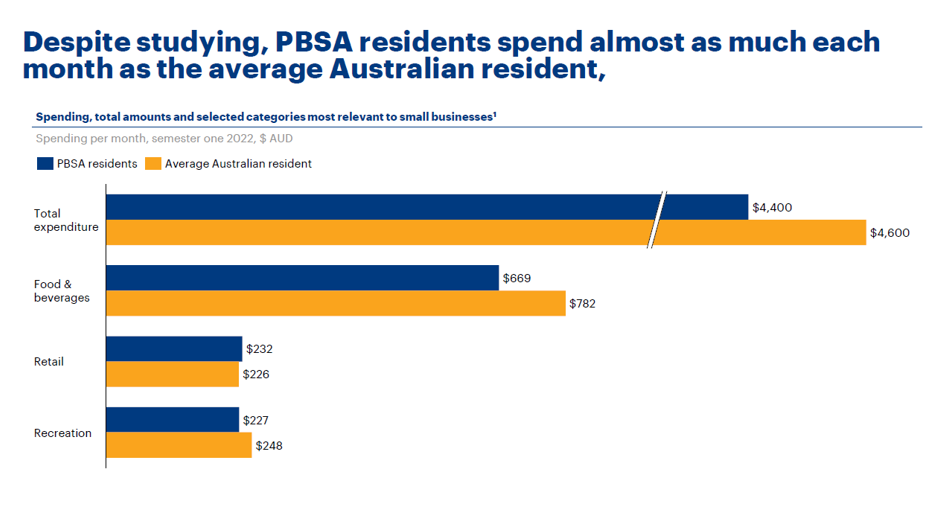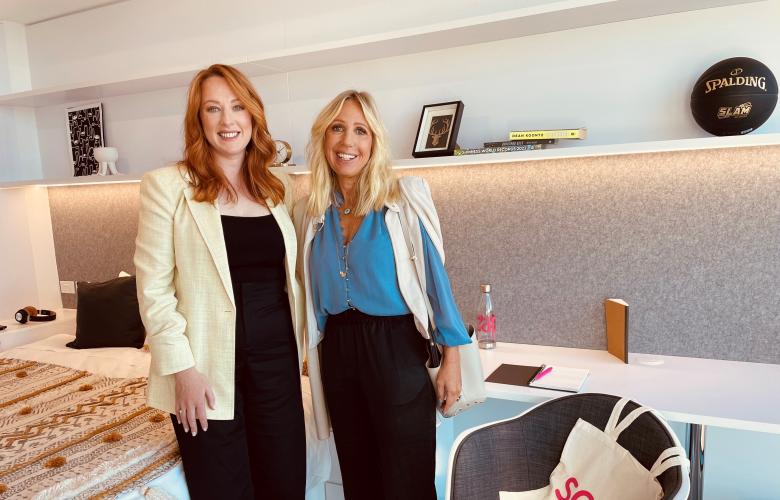New PBSA Report Reveals Extent of Student Spending
Contact
New PBSA Report Reveals Extent of Student Spending
The first-of-its-kind report produced by The Student Accommodation Council in partnership with Accenture, reveals the average PBSA student spends $4,400 per month not including tuition, while the average Australian spends $4,600, says The Student Accommodation Council’s Executive Director Torie Brown.
Students living in purpose-built student accommodation (PBSA) spend almost as much per month as the average Australian, according to a new report by the Student Accommodation Council.
The first-of-its-kind report also reveals more Australian students are living in PBSA than ever before, with domestic students making up almost a quarter of all PBSA residents (26 per cent), almost the same number as international students from China (27 per cent).

The fresh data, produced in partnership with Accenture, reveals the average PBSA student spends $4,400 per month not including tuition, while the average Australian spends $4,600, which also covers any children and dependants.
The Student Accommodation Council’s Executive Director Torie Brown said the report showcases the crucial contribution the student accommodation sector makes to the Australian economy.
“This report shows that students living in purpose-built student accommodation (PBSA) are good spenders, and importantly, they’re spending it in our recovering CBDs where PBSA sites are located,” Ms Brown said.
“While an office worker may only buy a sandwich and a cup of coffee when they are in the office three days a week, residents in PBSA are spending the same amount on food, beverage and recreation as the average Australian – and they are doing so 24 hours a day entirely in our CBDs,” she said.
The report, released today at the Property Council’s What’s Next for Student Accommodation event in Sydney, also highlights the vital role PBSA plays in housing Australian students, who now make up a quarter of all students living in private sector purpose-built accommodation.
“There’s clearly been a shift amongst domestic students who are now turning to PBSA because of extremely tight residential rental markets, and the superior offering of PBSA that is customised to their needs,” Ms Brown said.
“What’s clear in this report is the vital role PBSA plays in releasing pressure on the housing market, because students living in these buildings aren’t competing with mums and dads for private rentals.
“Without PBSA, we would have tens of thousands more people hunting for rentals in an already tight rental market, which would drive prices to even more unaffordable levels,” she said.
The report provides an in-depth analysis of the private PBSA sector in Australia which comprises 200 PBSA developments around the country, housing more than 76,000 students every year – not including university colleges.
Education is Australia’s fourth largest export (behind Iron ore, coal and gas) valued at almost $40 billion prior to the pandemic, and International Education is the country’s largest services export.
“The last thing we want is our housing supply or rental market crisis to become a handbrake on our education sector because we have nowhere for prospective students to live,” Ms Brown said.
“The report shows PBSA buildings are already at capacity in most Australian cities, and we are yet to see all our international students return.
“Right now, governments need to be looking at how they can remove the barriers to investment in this asset class – like cutting foreign investor taxes – to ensure we have enough beds to service growing demand including from domestic students and avoid placing greater pressure on an already-tight rental market.
“International investors are the main providers of capital for PBSA developments, and this report shines a light on the millions of dollars in fees and taxes those investors face, before investing here.
“It’s important that we have a strong pipeline of new PBSA assets in Australia to ensure our vital international education sector can continue to grow, and our CBDs are given a leg-up in their recovery.
“PBSA-based students are a vital economic engine for our CBDs, making up the shortfall in spending by office workers who are now spending more time working from home or in hybrid roles,” she said.







